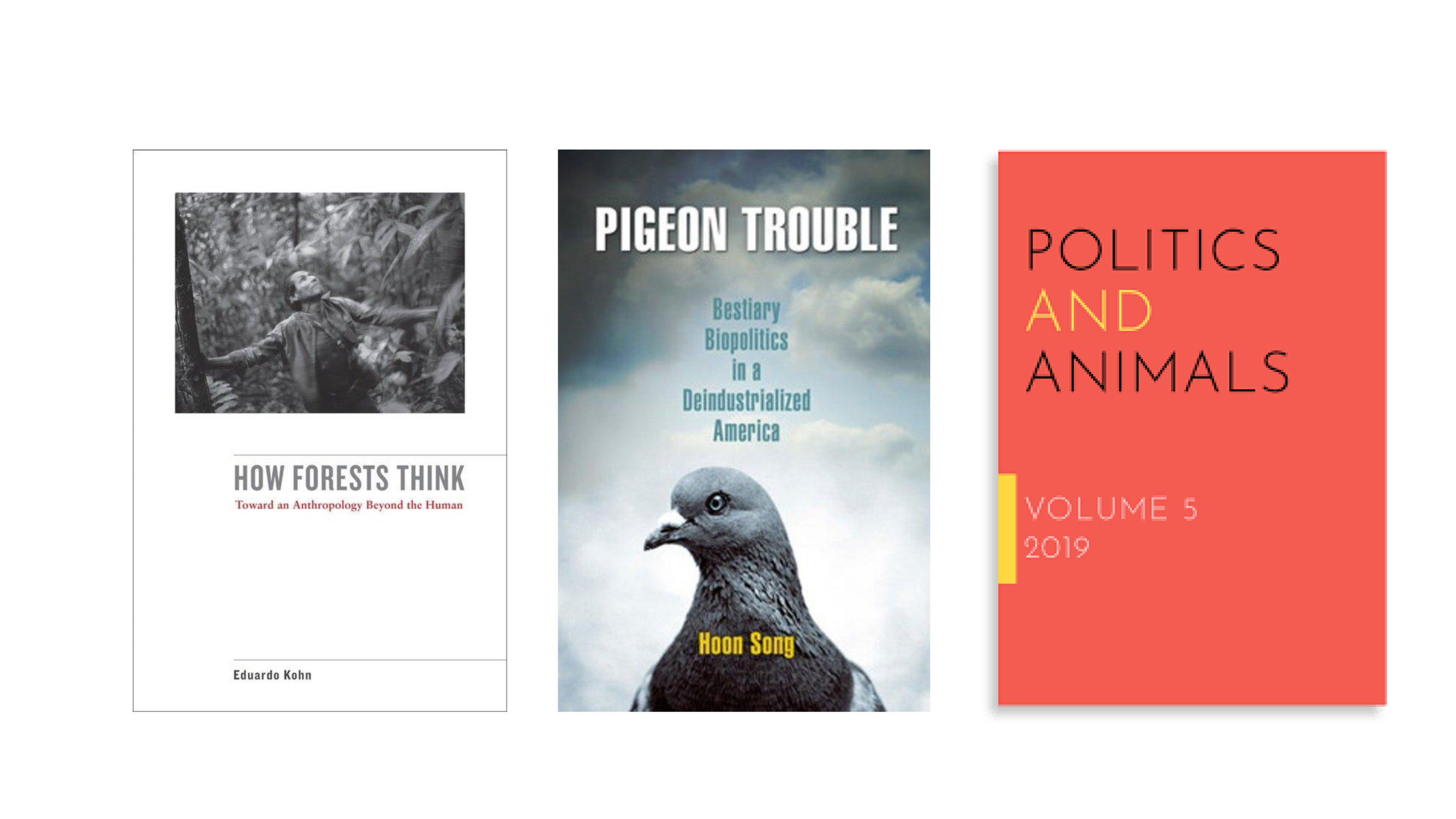 |
| C.V. |
|---|
當動物形成人的感官──談「夜間飛行」的鏡頭與書寫 從「望你早歸」發現鴿子到「夜間飛行」探討1944年軍鴿偵察角色,李立中的鴿子三部曲,耗時多年,將攝影鏡頭內的鴿子,填補進台灣近當代戰爭歷史中的主體位置。這種跨物種關係的關懷,一如貝特森 (Gregory Bateson) 所說「生存的基本單位」是「環境中的有機體」或是斯滕格斯 (Isabelle Stengers)將人類與非人對象,描繪成彼此交織,「互相捕獲」的關係。這種多物種關係使我們面對時序與符號更為立體。人類的生命、生活方式和責任都被捲入了這些糾纏的關係之中。這次展覽「夜間飛行」不僅描述了鴿子三部曲中扮演樞紐的「軍鴿」身影,更牽涉到了台灣傳統戰爭到現代戰爭轉型下,台灣人與鴿子在過去歷史中,彼此塑造的奇蹟與哀痛。人類的生活方式不能孤立地發生和描述,李立中與鴿子的計畫,一如安清(Anna Lowenhaupt Tsing) 所說這種方法:「熱情地沉浸在被研究的非人類的生活中。」 鴿子從岩石懸崖棲息地遷入近東的永久性城鎮,這個馴化過程可能出現在史前,目前信史紀錄則指出三千多年前美索不達米亞和埃及的文字和圖片記錄已有養鴿記錄。鴿子做為人類早期少數跟天空有關的馴養動物是罕見的,而考慮書寫史的同步關係,鴿子與訊息、鸚鵡與言說,給予了許多想像,例如希臘神話中,希臘語中鴿子(Περιστέρι)一詞的讀音與女神「普勒阿得斯」接近,詩人維吉爾認為跟「航海」(πλεῖν)有關。在文化與物種的互動中,鴿子揭露了指示詞(Demonstratives)的美學史,伴隨著信物的出現、書寫的發明引導了此處與彼處的通訊文化。從這個角度出發,「夜間飛行」中紀實攝影史與鴿史、影像與寫作、快門與動物性有了當代討論的向度。 在「夜間飛行」中,擬人的語氣跟晃動的影像是不相稱的。鴿子既不會講話、書寫,我們眼中《台灣空戰記事》、《夜間飛行》的錄像也不是人類來自持有的鏡頭。《台灣空戰記事》的鳴聲與《夜間飛行》的噪聲都不是人類中心的感官。關於動物心靈的三個主要立場:語言主義否認非語言動物有任何思想;唯心主義認為,由於他們的感知輸入不同,他們的想法與我們的想法僅在程度上有所不同;日常生活哲學和維特根斯坦佔據中庸立場,認為動物可以有簡單的思想。立中引用聖修伯里「夜間飛行」作為虛構向度的提示,以及軍鴿肉身扮演台灣從傳統戰爭到冷戰技術的過度,打開語言的意向性已被強調為區別於其他通信系統的一個關鍵特徵。 從鴿子的角度來看,鴿子既是戰爭的參與者,也是哀悼者。並且當非人物種進入了文本秩序,也就同時參與了符號象徵化的過程。在「夜間飛行」軍鴿一如當時被徵招入伍的台灣人有著非自願的命運,深受外來帝國勢力形塑。從藝術家與藝術史來看,「夜間飛行」的展覽透過文字、攝影機器與影像組合,恰恰是哲學家格洛克(Hans-Johann Glock):「動物不僅能感知事實,還能評價事實——或是說,在更現實的行為學習語中,他們的環境特徵- 在回應他們好或壞的意義上(例如有吸引力或威脅),他們可以採取相應的行動。客觀原因他們不僅在認知上可以探問,而且在意向上他們可以自行評估。」而這種語言中心主義,也恰好是藝術史本身未解的問題──傳統上用以區分動物性的正是從「語言」作為分界點,尤其對比戰地攝影記者透過鏡頭記錄戰場的這個事實,紀實攝影中關於自動快門、瞬間、再現政治跟語言的關係,跟立中從攝影轉換成其他物種的社會敘事有著許多反思的可能。 「夜間飛行」不僅描述了戰爭中與軍鴿的共生關係,打開了台灣戰爭中鴿子的角色替戰爭的敘事增添了細節,與後來鴿笭跟賽鴿的多重轉折。若我們從而思考被動物性所擺放的攝影與錄像藝術,包括如鴿子在書寫史中被隱藏的角色以及在空中由鴿子身上的鏡頭所晃動的畫面時,如何重估動物意向性的貢獻呢?立中透過了五年打開了以鴿子為主體,藝術可思考的說話方式(façon de parler)並且打開了紀實攝影、對此提問的可能性。並進而讓其以從虛構寫作的文件本身關於跨物種到科技媒件轉換在資訊傳播的藝術面向的複雜面貌。
When Animals Act as Human Beings’ Senses—A Talk about the Shooting and Narratives of Night Flight From discovering pigeons in Longing for Your Return to the analysis of 1944 military pigeon reconnaissance in Night Flight, Lee Li-Chung’s pigeon trilogy has taken many years to complete. His works make pigeons the main players in Taiwan’s contemporary war history. The care in this type of cross-species relationship reflects is similar to how, as Gregory Bateson put it, the “basic unit of survival” is “organisms in the environment”. It also reflects Isabelle Stengers’ portrayal in that the relationships between humans and non-human objects are intertwined and “mutually captured by each other.” This multi-species relationship allows us to understand time and symbols three-dimensionally. Human beings’ lives, lifestyles, and responsibilities are all involved in these entangled relationships. The Night Flight exhibition shows not just how the military pigeon has played a pivotal role in the pigeon trilogy, but also draws in the miracles and sorrows shared by the Taiwanese people and pigeons during the transformation period in which Taiwan went from traditional warfare to modern warfare. Human beings’ lifestyles do not come into existence, and cannot be described, in isolation. The relationship between Lee Li-Chung and pigeons is exactly as Anna Lowenhaupt Tsing describes: “Enthusiastically immerse yourself in the study of non-human life.” Pigeons migrated from rocky cliff habitats to permanent towns in the Near East. This domestication process may have occurred in prehistoric times. The history records indicate that there are written words and images of pigeon breeding in Mesopotamia and Egypt over 3,000 years ago. In the early days of mankind, it is rare that pigeon was one of the few flying animals domesticated by human beings. Considering the synchrony of the writing history, imagination abounds in drawing linkages between pigeons and messages, and between parrots and speeches. For example, in Greek mythology, the Greek word for pigeon (Περιστέρι) has a similar pronunciation to that of the Pleiades goddesses. The Poet Virgil considered pigeons to be related to navigation (πλεῖν). In the interaction between culture and species, pigeons reveal the aesthetic history of demonstratives. The emergence of letters and the invention of writing guide communicative culture in different places. From this perspective, the documentary photographic history and pigeon history, the images and writing, the shutter and the animality in Night Flight possess dimensionality for contemporary discussions. In Night Flight, the anthropomorphic tone is not commensurate with moving images. Pigeons cannot speak; nor can they write. The video footage in Memo of Formosa Air Battle and in Night Flight do not come from the perspectives of human beings. The humming in Memo of Formosa Air Battle and the chirping in Night Flight do not come from human beings’ sense organs. There are three main viewpoints on animals’ minds: Linguicism denies that nonverbal animals have any thought; idealism states that, due to animals’ different perceptual inputs, their thinking differs from human beings’ thinking only in terms of degree; while everyday philosophy and Wittgenstein take the middle ground, stating that animals can have simple thoughts. Citing Saint-Exupéry’s Night Flight as a hint for the fictional dimension, and having military pigeons play the role in Taiwan’s transition from traditional warfare to Cold War technology, Li-Chung opens the possibility of linguistic intentionality, which has been highlighted as a key feature that differentiates communication systems. From the perspective of a pigeon, the pigeon is both a participant in the war and a mourner. When non-human species enter the textual order, they also participate in the process of symbolization. In Night Flight, military pigeons had involuntary experiences of fate, just like Taiwanese people who were drafted into the army at the time. Their fate was deeply shaped by foreign imperial powers. From the perspective of artists and art history, the Night Flight exhibition uses a combination of words, photographic machines, and images to reflect precisely what philosopher Hans-Johann Glock describes: “Animals perceive things that happened; and they can evaluate things that happened. In other words, in the real behavioral learning process, they can take corresponding measures in response to their environmental characteristics—be they good or bad, be they attractive or threatening. Animals can explore objective reasons through cognition; and they can conduct self-evaluation when it comes to intentions.” This kind of linguistic centralism is also an unsolved problem in art history. Conventionally, language is a demarcation point that distinguishes animality. Contrasting this with the fact that the battlefield photojournalist records what happens on the battlefield through the camera lens, there are many possibilities for reflection on the relationships between the automatic shutter, instancy, the reappearance of politics, and language in documentary photography. The same possibilities apply to Li-Chung’s social narratives that are about transformation into other species through photography. Night Flight not only describes the symbiotic relationship between human beings and military pigeons during the war, but also adds narrative war details on the roles pigeons played in Taiwan’s wars. Night Flight also describes the many turns and twists that have happened with whistling pigeons and racing pigeons. If we think about the art of photography and video recording that carry animality, including the hidden role of pigeons in the history of writing and shaking images of pigeons in the air through camera lens, how do we reassess the contribution of animal intentionality? To ask this question, Li-Chung has spent five years exploring documentary photography, raise questions of possibility, and open ways of speaking (façon de parler) that center on pigeons and show thought in arts. Li-Chung further let fictional written documents about cross-species themselves be transformed into technological media to show the complexity of artistic aspects in the dissemination of information. |


圖片提供 / 印卡
Courtesy of Enkaryon Ang